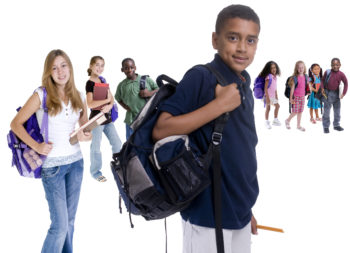The Middle School Distance Learning Experiment
 The Middle School Distance Learning Experiment
The Middle School Distance Learning Experiment
A three-part reflection series on parenting middle schoolers during the pandemic on the home front, facing political realities with pre-teens, and practical considerations regarding school re-opening.
My youngest daughter entered 6th grade with the distance learning model in the Fall of 2020 and I am now the parent of two daughters in middle school. Having been a middle school classroom teacher for ten years, I’m well aware of the typical middle school experience for adolescents. Granted, middle school is already a life-changing experience for students in and of itself, but having to experience it during a pandemic is uncharted territory for everyone – parents and students alike. Talk about a paradigm shift! Indeed, this is the great middle school distance learning experiment!
Distance Learning Advantages
My objective is for my daughters to overcome adversity in the face of challenges, so I spoke with them about the disadvantages and advantages of distance learning. My hypothesis is that by focusing on and managing the advantages, we could be optimistic that distance learning would bring positive learning outcomes, namely that the girls would be more independent learners.
Acknowledging that there are external factors out of our control, we also decided that there would be a great number of factors that are in our control that will affect the nature of the girls’ learning outcomes. We have employed the following strategies to support independent learning:
- We have agreed that the girls will stick with a consistent time to wake up in the morning and log on to their classes on time.
- The girls have their own dedicated learning space and they have access to all the learning materials provided by the school.
- Screen time is a given for school and homework time, but extra screen time for media and hanging out with friends is a privilege to be earned after finishing their studies and other daily responsibilities.
- For my 6th grader, the transition to middle school meant managing assignments from six different classes. I did a daily homework check with her until her progress report card, then evaluated whether we needed to continue with daily homework checks, weekly homework checks, or go to an “as needed” basis.
- For my 8th grader, taking ownership for her grades and the outcome of her learning is key for high school preparation. We decided that any communication with her teachers needed to be student initiated. If she had a question about a graded assignment, or if she needed clarification about a project, she would need to take the first step towards change, whether that meant attending the student support hour, posting a question on Google Classroom, or writing an email to the teacher.
- For both girls, we decided that they would consult one other resource before asking a parent when they needed help on their homework. The one other resource could be the student help from the textbook resource page online, it could be attending office hours with the teacher, it could also be looking up a video for explanation, or calling a friend to work out the assignment.
Taking Responsibility for Their Own Learning
So far, both girls have risen to the challenge of taking responsibility for their own learning and have adapted quickly to the distance learning format. They have gotten into a routine and have formed good homework habits. This experiment is going well so far. We’ll have to see how it progresses as the school year continues.
As we approach mid-year and the question of returning to school in person keeps coming up, we still have to consider a few questions:
- Is it safe enough on a middle school campus for students to maintain social distance?
- What are the risk factors for a middle school campus where students change classrooms six times a day and mix with different students and teachers throughout the day?
- Now that students have adopted distance learning routines, would it be disruptive to transition to a hybrid learning model?
- Are there special learning needs or other services that can only be provided in an in-person school environment?
- Is there evidence of learning loss?
- Do we have internet access issues at home?
- Are students being deprived of social interaction?
There is much to consider and many families will need to think about what will be in their children’s best interest.
Best wishes to you as we continue the distance learning experiment,
Jaime
Copyright © 2020 by GenParenting